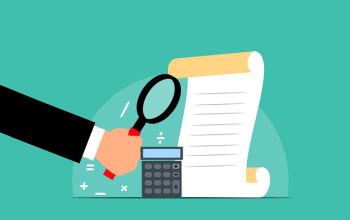- Transferring a Car Title Online: A Step-by-Step Guide
- Essential Documents for DMV Title Transfer Process
- How to Prepare for Your DMV Title Transfer Appointment
- Understanding the DMV Transfer Checklist: Ensuring Accuracy
- Roles and Responsibilities in Vehicle Title Inspection
- Verifying Ownership with the DMV: Proof of Sale Requirements
- Common Delays in the Car Ownership Transfer Process & How to Avoid Them
Transferring a Car Title Online: A Step-by-Step Guide

Transferring a car title online has become an increasingly popular and efficient way to complete the DMV title transfer process. Many states now offer this option, allowing individuals to bypass the traditional in-person visit to the DMV. Here’s a simple step-by-step guide to help you navigate this digital route:
1. Gather Necessary Documents: Before you begin, ensure you have all required documentation ready. This typically includes proof of ownership (like the current title or registration), a valid driver’s license or state ID, and any other documents mentioned in your jurisdiction’s DMV guidelines.
2. Locate Your State’s Online Title Transfer Portal: Each state has its own online system for vehicle title transfers. Visit your state’s official DMV website to find the specific portal. Here, you’ll create an account, input your vehicle information, and access forms required for the transfer.
3. Complete the Online Application: Fill out the application accurately, providing all necessary details about the current owner, new owner, and the vehicle itself. Upload any requested documents as proof of ownership and identification.
4. Submit Payment (if applicable): Some states charge a fee for online title transfers. Ensure you have your payment method ready and follow the on-screen instructions to submit the payment securely.
5. Receive Confirmation: After submission, you should receive a confirmation number or email. Keep this for your records, as it will be useful if there are any questions or issues during the process.
6. Wait for Processing: The processing time varies by state but is usually relatively quick. During this period, the DMV will verify your documents and conduct an inspection to confirm the vehicle’s ownership and identity.
7. Complete Any Additional Steps: Depending on your situation, you may need to schedule a title transfer appointment at a local DMV office or provide additional verification of title transfer. Keep track using the DMV transfer checklist to ensure nothing is missed.
Essential Documents for DMV Title Transfer Process

When initiating a car ownership change through the DMV title transfer process, several essential documents are required to facilitate the transaction smoothly. These typically include proof of current ownership, such as the original vehicle title or a bill of sale. Additionally, a valid driver’s license or state-issued ID card is crucial for verification purposes. For transactions involving sales, buyers must provide a completed DMV title transfer form, along with evidence of insurance and a valid registration certificate.
In many jurisdictions, transferring a car title online simplifies the process, allowing individuals to submit documents digitally. However, certain documentation, like signed title transfers and vehicle inspection reports, may still require physical submission or in-person verification at a designated DMV office. A well-prepared DMV transfer checklist ensures that all necessary paperwork is accurately completed and submitted, streamlining the ownership change and avoiding potential delays.
How to Prepare for Your DMV Title Transfer Appointment

Understanding the DMV Transfer Checklist: Ensuring Accuracy

Understanding the DMV Transfer Checklist: Ensuring Accuracy
When transferring a car title, accuracy is paramount to avoid delays and complications. A thorough review of the DMV transfer checklist becomes essential, especially when opting for the convenient transfer car title online process. This digital approach, while efficient, demands meticulous attention to detail to ensure all required documents are correctly submitted. The checklist typically includes items such as original title documentation, proof of sale or gift, current registration, and valid identification.
Each jurisdiction may have specific requirements, so it’s crucial to verify the DMV transfer checklist applicable to your area. Accurate vehicle title inspection involves double-checking that all information is up-to-date and correct, from the vehicle identification number (VIN) to the owner’s name and address. The ownership verification DMV process relies on these details, so a single mistake could hinder the title transfer appointment. Using the DMV proof of sale document ensures a clear chain of ownership is established, simplifying the entire DMV title transfer form submission process.
Roles and Responsibilities in Vehicle Title Inspection

When transferring a vehicle’s title, several roles and responsibilities come into play, ensuring a smooth and legally compliant process. The seller is typically responsible for preparing and submitting the necessary documentation to the DMV, including the original title, a completed DMV title transfer form, and proof of sale. This involves gathering all required documents, such as the bill of sale or any other legal agreement detailing the ownership change.
The buyer, on the other hand, should verify that all information is accurate and complete before submitting the application. They may also need to schedule a Title Transfer Appointment at their local DMV, where their identity will be verified, and they will provide proof of insurance and registration. This dual process of preparation and verification by both parties is crucial in ensuring a successful title transfer, especially when transferring car titles online to avoid delays or complications.
Verifying Ownership with the DMV: Proof of Sale Requirements

When transferring a car title, verifying ownership with the DMV is a crucial step. This process involves providing concrete proof of the sale to ensure the legitimacy of the ownership change. In many jurisdictions, individuals can facilitate this through the convenient option of transferring car titles online. By submitting the necessary documentation, including the DMV title transfer form and proof of sale, applicants can expedite the process. This streamlined approach allows for a faster vehicle registration and title update, making it an attractive alternative to traditional in-person visits.
The DMV proof of sale is a critical component of ownership verification. It typically includes details such as the purchase price, date of sale, and signatures from both the buyer and seller. Some regions might also require additional documentation like bill of sale or vehicle history reports for thorough title transfer inspection. Ensuring all these elements are in order before visiting the DMV or scheduling a title transfer appointment can help avoid potential delays or complications during the ownership transition.
Common Delays in the Car Ownership Transfer Process & How to Avoid Them

Common Delays in the Car Ownership Transfer Process & How to Avoid Them
One of the most frequent causes of delay in car ownership transfers is incomplete or inaccurate documentation. When preparing to transfer a car title, it’s essential to ensure all required forms are filled out correctly and every piece of proof requested is provided. For instance, many jurisdictions require proof of sale, which may include a bill of sale or a previous title, depending on the circumstances. Failure to submit these documents can lead to significant postponements in the process.
Additionally, lengthy processing times often occur due to backlog at the Department of Motor Vehicles (DMV). To avoid this, consider utilizing online title transfer services whenever possible. Many states now allow individuals to complete the entire DMV transfer checklist digitally, expediting the procedure. Furthermore, scheduling a title transfer appointment in advance can help manage expectations and ensure that all necessary verifications, including vehicle title inspection and ownership verification by the DMV, are handled promptly.



